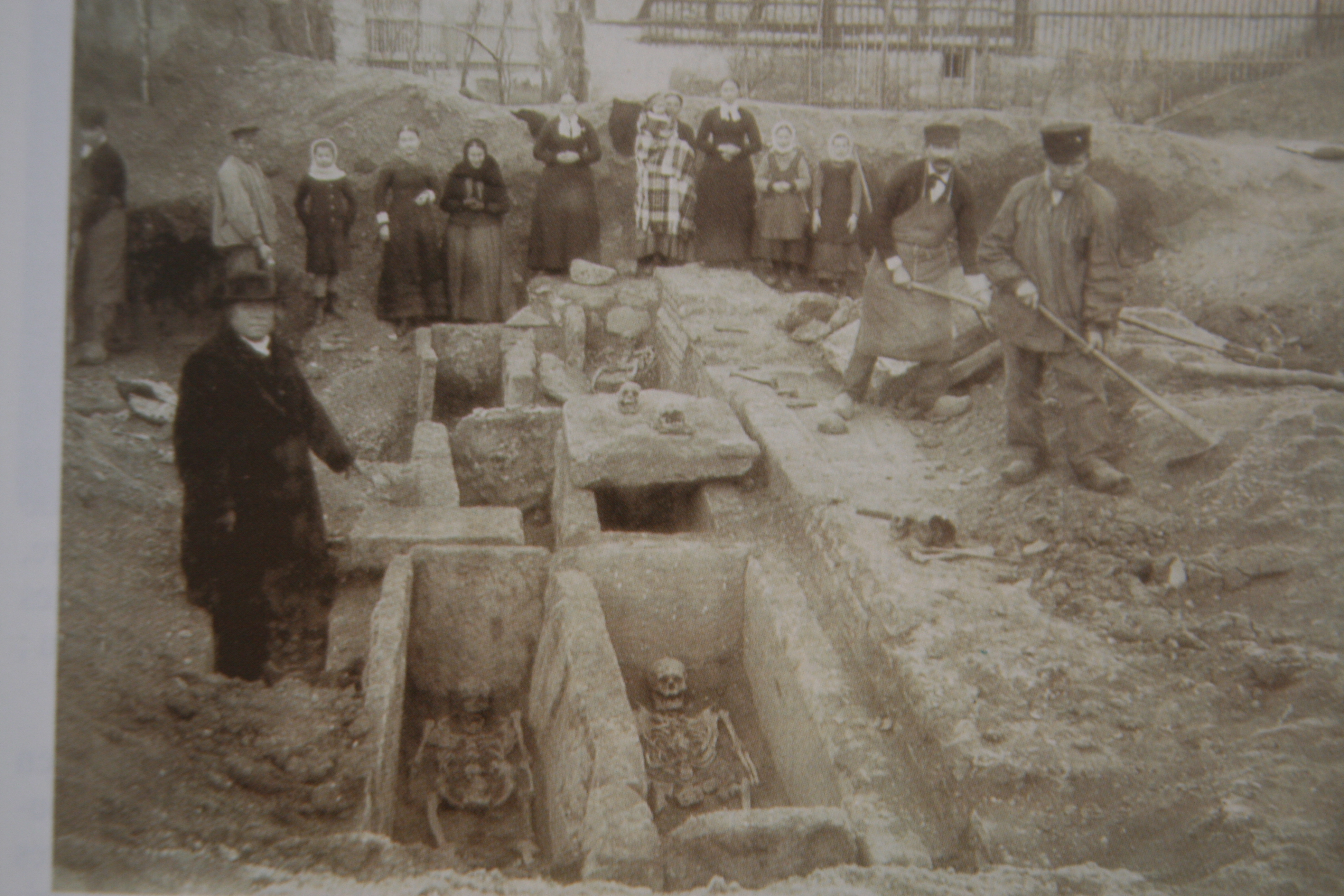History
of the discovery of the Site (Fuchs 1994)
- 16th Century: first mention of the discovery of the Antique
site by Beatus Rhenanus in 1543. the
humanistic Renaissance period sublimated the Roman and Greek antiquity.
- 1603: discovery of the Apollo Altar that disappeared when
library of Strasbourg burnt in 1870. An
oral tradition subsisted
- 1748 : discovery of another Altar by a pastor
- Publication of Alsatia Illustrata written by Daniel
Schoeplin who described the site.
- 1780-1784: Sigismond Billing, rector of the city of Colmar,
discovered the Castellum, a carved bas-relief, a tomb, and different
parts of
the bailey.
- 1828: Phillipe de Golbery, a magistrate of Colmar,
published: Memoire sur Argentovaria, Ville des Sequaniens in which he
described
the site.
- From 1850 to 1899, Emile Alphonse Herrenschneider,
protestant pastor in Horbourg and Wihr-en-Plaine, dedicated most of his
free
time in the archaeological research on the site. He discovered tombs
and
published a book Rӧmercastell und Grafenschlo Horbourg.
- 1964: a stratigraphic section (6 m² of surface- 4m deep)
done by Charles Bonnet and Madeleine Jehl, both teachers, revealed the
existence of habitations dating from the 2nd Century. The discovery of
a
cesspool could stretch out the to the
1st Century. This important discovery changed the perspective of the
site: we
knew then that there was a built-up area during the 1st century, and it
is only
in the 4th century that the military fort was built.
- Between 1989 and 1994 new technique: geophysical prospecting
by electrical resistivity: discovery of furnace for metal,Tombstones,
Coins,Potter kiln
- 1991: creation of the archaeological and historical society:
ARCHIHW, intended to keep a close watch to the site.
- During the 20th Century, new technique and more systematical
rescue excavation was done. However, the urbanization of the village
has also
affected the site and destroyed many features.
 1850 : excavations done
byEmile Alphonse Herrenschneider a
protestant pastor
1850 : excavations done
byEmile Alphonse Herrenschneider a
protestant pastor
Home Page
 1850 : excavations done
byEmile Alphonse Herrenschneider a
protestant pastor
1850 : excavations done
byEmile Alphonse Herrenschneider a
protestant pastor